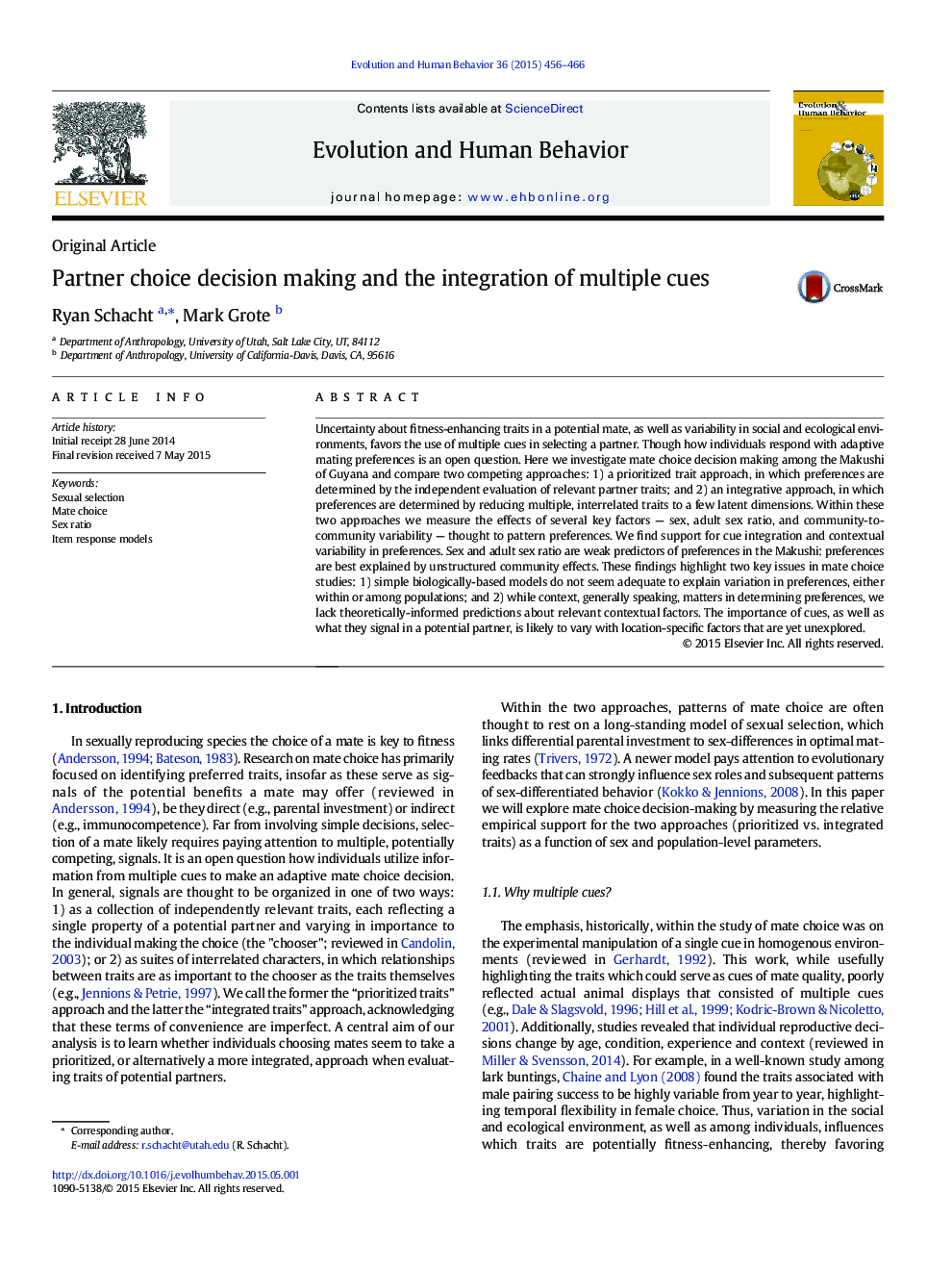| Article ID | Journal | Published Year | Pages | File Type |
|---|---|---|---|---|
| 943223 | Evolution and Human Behavior | 2015 | 11 Pages |
Uncertainty about fitness-enhancing traits in a potential mate, as well as variability in social and ecological environments, favors the use of multiple cues in selecting a partner. Though how individuals respond with adaptive mating preferences is an open question. Here we investigate mate choice decision making among the Makushi of Guyana and compare two competing approaches: 1) a prioritized trait approach, in which preferences are determined by the independent evaluation of relevant partner traits; and 2) an integrative approach, in which preferences are determined by reducing multiple, interrelated traits to a few latent dimensions. Within these two approaches we measure the effects of several key factors — sex, adult sex ratio, and community-to-community variability — thought to pattern preferences. We find support for cue integration and contextual variability in preferences. Sex and adult sex ratio are weak predictors of preferences in the Makushi: preferences are best explained by unstructured community effects. These findings highlight two key issues in mate choice studies: 1) simple biologically-based models do not seem adequate to explain variation in preferences, either within or among populations; and 2) while context, generally speaking, matters in determining preferences, we lack theoretically-informed predictions about relevant contextual factors. The importance of cues, as well as what they signal in a potential partner, is likely to vary with location-specific factors that are yet unexplored.
